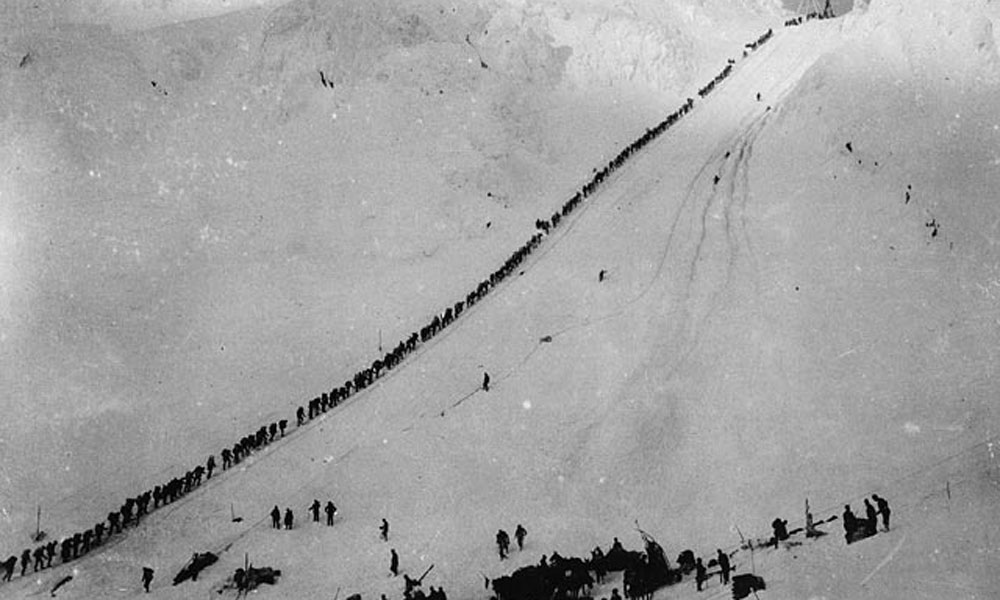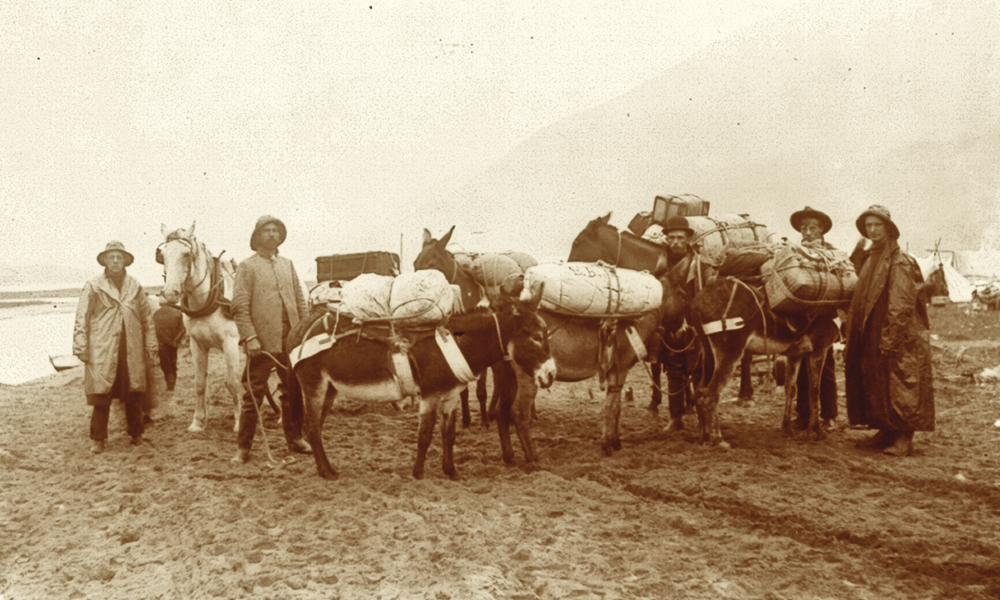 He was too young to read the message scratched on the back, but four-year-old Richard Fike knew he loved the carriage clock he had found in Alaska while his dad was working on the Alaska Highway in the 1940s.
He was too young to read the message scratched on the back, but four-year-old Richard Fike knew he loved the carriage clock he had found in Alaska while his dad was working on the Alaska Highway in the 1940s.
When he did learn to read, among the first words he mastered were the ones on that clock, “cleaned Aug. 4, 1896.” When he got old enough to study history, he realized the clock had been cleaned just 12 days before gold was discovered in what became the Klondike Gold Rush. He felt a rush then that hasn’t stopped all these 70-odd years.
“I had my first museum when I was eight, in my parent’s spare bedroom—lots of fossils, a celluloid comb case, stuff I found,” he says. “I started card cataloging my artifacts at age 12.”
The family moved back to Nebraska, where both grandfathers encouraged Richard’s collecting habit. “My maternal grandfather had the biggest house in town, and I filled the ballroom,” he says. “My other grandfather was a banker, and he had a warehouse—I had the top of that full.”
As an adult, he spent his career as the historical archaeologist for the Bureau of Land Management in both Utah and Colorado. All the while, he kept collecting historical artifacts.
In 1979, he started buying up old buildings, including one that appeared in 1969’s True Grit. In 1996, he bought nine acres near Montrose, Colorado. It was open land, except for a 1970s house that became a home for him and wife Carol.
The next year, he opened the Museum of the Mountain West, and Carol became the education director. They moved onto their property 24 buildings that Richard restored—he’s a noted expert in historical restoration—and re-created another 11 buildings. His collection preserves a half million artifacts covering 1880-1940. Visitors have so much to take in that guides are a must, and Richard has trained 94 tour guides over the years.
“When you’re here, you get to go inside the buildings and hear the stories—you’re not staring from the outside behind the ropes. This is really like it was. It’s really accurate, like you were there,” he says.
What delights him most—besides the folks from 26 countries and 46 states who came through his museum last year—are the hundreds of children who come on school visits every year. “I want youngsters to appreciate history, understand history and not shun it,” he says.
Just like he appreciated history as a boy, inspired by that carriage clock. The timekeeper rests on the buffet at his house next to the museum, and, yes, it still gives him a rush.
Arizona’s Journalist of the Year, Jana Bommersbach has won an Emmy and two Lifetime Achievement Awards. She also cowrote and appeared on the Emmy-winning Outrageous Arizona and is the author of two nationally-acclaimed true crime books and a children’s book.






